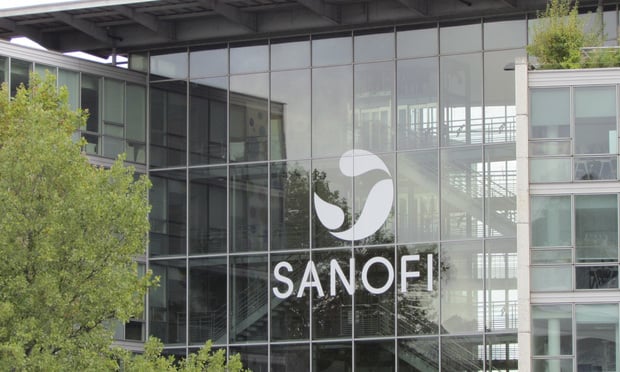 Rather than emphasizing the chances of a disability, disabilityinsurance is an opportunity to reshape the conversation aroundprotecting the employee's lifestyle. (Photo: Shuterstock)
Rather than emphasizing the chances of a disability, disabilityinsurance is an opportunity to reshape the conversation aroundprotecting the employee's lifestyle. (Photo: Shuterstock)
Sitting down with your average consumer and having aconversation about voluntary disability insurance is an uphillbattle. From the get-go, you're throwing around a loaded word:“disability.” Whether fair or not, it paints a picture. You cantell them all the stats in the world about the risks, that 1 in 4 of today's 20-year-olds will experiencea disability before they retire, but too often they can't applythat statistic to themselves. It's no surprise, since the mostcommonly cited reasons for enrolling in coverage are emotional ones. Employees are less and lesslikely to make a decision based on facts and figures.
|Related: Misconceptions of coverage driving lowparticipation in disability insurance
|This, then, begs the question: how do we approach disabilityinsurance? Well, the best way is to remove “disability” from theequation entirely. By doing this, you'll find that there are plentyof ways to have a meaningful conversation with employers andemployees about disability insurance that place the focus onfinancial well-being, a healthy lifestyle and productivity in theworkplace.
|It's about the paycheck
Not everyone offered a voluntary disability insurance policywill become disabled, but they will all collect a paycheck. Morethan protecting from a disability, their policy is there to protectthat paycheck. Since almost 8 in 10 American workers say they livepaycheck to paycheck to make ends meet, that'sa message that will really hit home.
|Rather than emphasizing the chances of a disability, there's anopportunity to reshape the conversation around protecting theemployee's lifestyle. To do that, they need their paycheck. Thiscreates a more relevant conversation; one that's more focused on apressing need that employees can relate to and that doesn't have tobe centered on the fear of a disability.
|Kick financial stress to the curb
Forty-six percent of workers spend three hours or more duringthe work week thinking about or dealing with financial issues.Before a disability even happens, worrying about the loss of apaycheck would certainly weigh on an employee's mind. Voluntarybenefits and, particularly, disability insurance can help ease someof that anxiety about finances.
|This pays dividends for the employee as well as their employer.For employers, it will help to create more engaged, effectiveemployees. And, the more an employee purchases, the more confidentthey will be that their income is protected. In this way,disability can be seen as a remedy for financial stress and notjust a shield against a disability.
|To add to this, some policies include benefits for policyholdersthat don't have claims. No matter what happens, they will get moneyout of the policy. Employees compare this feature to manyauto-insurance policies, incenting them to purchase and keep theirpolicies. In turn, this contributes to them being worry-free aswell as being focused at work and is a great tool to reshape theconversation about the product.
|Now, let's say that something unfortunate happens and anemployee does have to take time off of work to recover. If, as wepointed out above, many employees need their paycheck to make endsmeet and are distracted by financial issues at work, imagine howthose issues would be compounded if they just had to take a leavefor a month or two without any pay. It's not the disability itselfthat's the problem, it's imagining life after the disability.
|Disability is a part of a healthy recovery
Disability insurance is generally thought of as protection foran employee's income, but it can also play a role in protectingtheir health. For one, it allows them to focus on their recoverywhile they're out of work rather than worry about their finances.On top of that, it helps to make sure they don't return to workprematurely.
|If an employee doesn't have disability insurance, or doesn'thave enough, the financial pressure to get back to work may drivethem to return before they're ready. The cost of “presenteeism” is estimated at $150 billion ayear for U.S. employers. It's a bad situation for everyoneinvolved; the employee is risking their health and the employer isgetting an employee who may not be fully ready to work. Worst ofall for everyone involved is that returning to work too soon runsthe risk of their condition recurring or worsening. Disabilityinsurance can be the key to making sure that, when they need to, anemployee is able to fully recover.
|Disability insurance tends to focus on what happens when anemployee is disabled. We can't eliminate that from the conversationwe have about disability entirely, but we can find other ways totalk about its importance. More often than not, the best way to dothis is to focus on the financial side of it and the impact theproduct has on employees and their employers. There are all kindsof doors that open up when we stop forcing employees to think abouta “disability” and get them to start looking at their paycheck andthe lifestyle they want to maintain through a disabilityproduct.
|Pam Handmaker is senior director of product& innovation at Trustmark Voluntary Benefits.
Read more:
Complete your profile to continue reading and get FREE access to BenefitsPRO, part of your ALM digital membership.
Your access to unlimited BenefitsPRO content isn’t changing.
Once you are an ALM digital member, you’ll receive:
- Critical BenefitsPRO information including cutting edge post-reform success strategies, access to educational webcasts and videos, resources from industry leaders, and informative Newsletters.
- Exclusive discounts on ALM, BenefitsPRO magazine and BenefitsPRO.com events
- Access to other award-winning ALM websites including ThinkAdvisor.com and Law.com
Already have an account? Sign In
© 2024 ALM Global, LLC, All Rights Reserved. Request academic re-use from www.copyright.com. All other uses, submit a request to [email protected]. For more information visit Asset & Logo Licensing.








